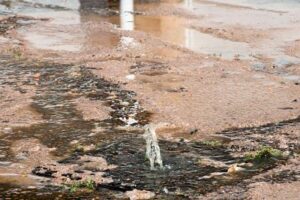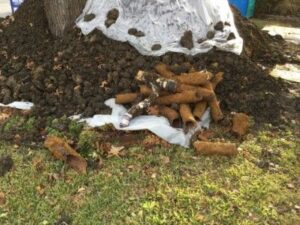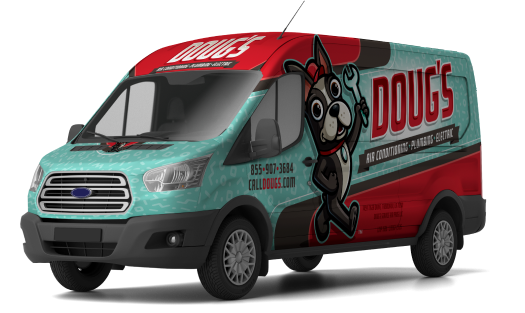Sewer Line Repair Methods
When you’re having sewer problems, it’s a little like living in a horror story. You can’t trust your drains not to backup and overflow with disgusting sewage; there’s are noxious gases entering your home; sewer water is seeping up through your yard. You need to do something to fix this, before an actual sewer monster finds its way into your home!
Doug’s can help resolve your horrifying sewer problems, but you probably want to research some of the methods used to repair and replace sewer lines in the Thibodaux and Houma areas just so you have an idea of what to expect. We can help with that, too.
Traditional Sewer Repair & Replacement
Traditional sewer repair uses an “open cut” method to access the damaged sewer pipe. Your plumber will dig a trench in your yard—usually with a backhoe or similar digging equipment—to expose the sewer line.
Sometimes it’s easy to tell where the digging is needed based on seepage in the yard above the broken sewer line, but most of the time the trench is cut using an estimate based on yard design, building records, and video sewer inspections to pinpoint the source of the damage. Once the damaged pipe is exposed, all necessary repairs are completed and the trench is filled back in.
Traditional open cut sewer repair is ideal in situations where the pipe is severely damaged, particularly in cases of heavy root incursion. The process of digging the trench will remove the invasive tree roots and give the new sewer pipe a protective buffer from future root growth.
The downside, however, is that digging the trench tears up your yard and requires that any landscaping you have be reinstalled, driving up the total cost of your repairs. Traditional sewer repair can also take several days to complete, which can be a serious inconvenience.
Trenchless Sewer Repair & Replacement
Trenchless sewer repair is a newer approach, developed about 15 years ago. Instead of digging a trench to access with damaged sewer pipe, two small holes are dug at either end of the pipe and your plumber uses a combination of cameras and flexible piping to repair the damaged pipe from the inside—similar to the way doctors perform laparoscopic surgery.
There are two major methods of trenchless repair and replacement. The first is trenchless pipe lining, which is ideal for repairing leaks and preventing future root incursion. A resin-imbued “deflated” pipe is pulled through your existing sewer pipe and inflated in place, where its resin bonds with the existing pipe to create a stronger sewer line.
The second method is trenchless pipe bursting, in which a rigid pipe of the same size as your current sewer pipe is dragged through the line behind a blunt breaking edge. The blunt end breaks up the existing pipe, making room for the new pipe.
The major advantages of trenchless are that your yard experiences minimal damage from digging and trenchless generally takes less time and costs less thanks to the lack of excavation. The downside is that trenchless sewer repair and replacement doesn’t work for pipes that have collapsed or in areas with a heavy root presence.
Not Sure Which Is Right For Your Sewer Needs?
Every instance of sewer damage is unique (and uniquely awful!) If you’re experiencing sewer problems and unsure what the right sewer repair method is, call Doug’s at (985) 746-1116 for a sewer inspection. We’ll diagnose the problem and make a recommendation on whether traditional or trenchless sewer repair is best for your needs.



